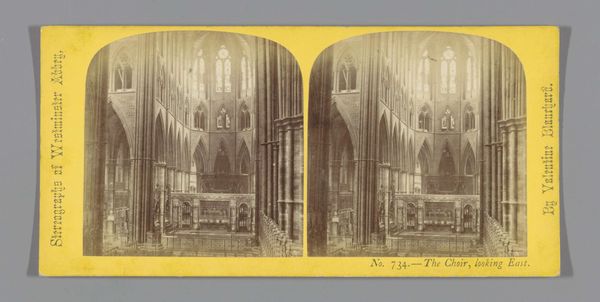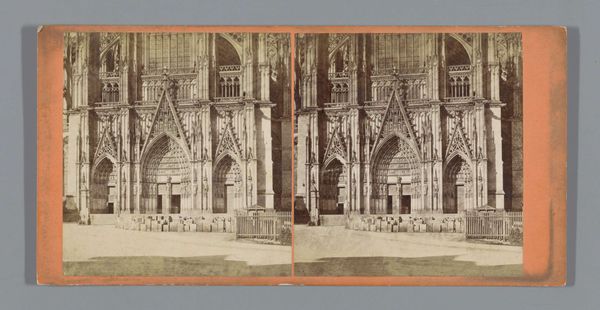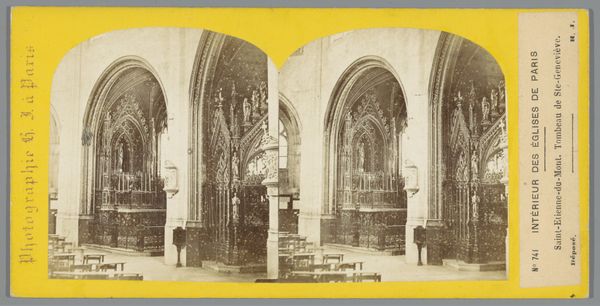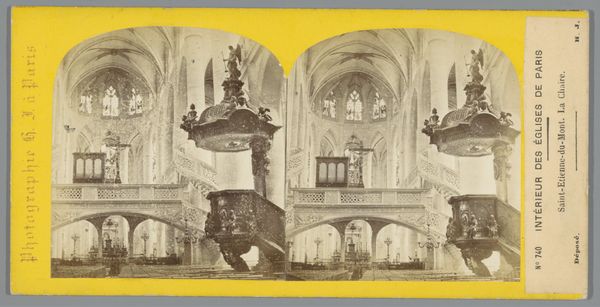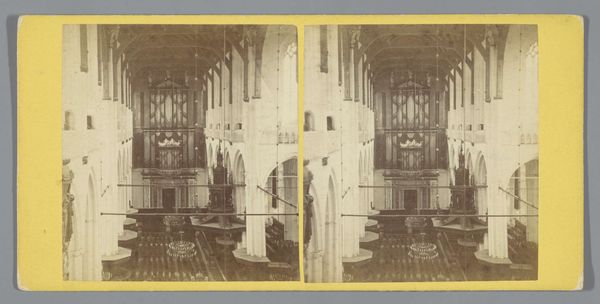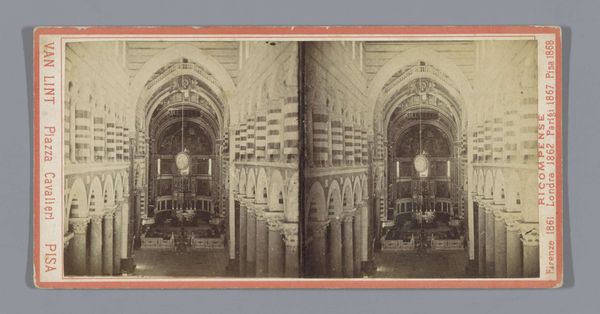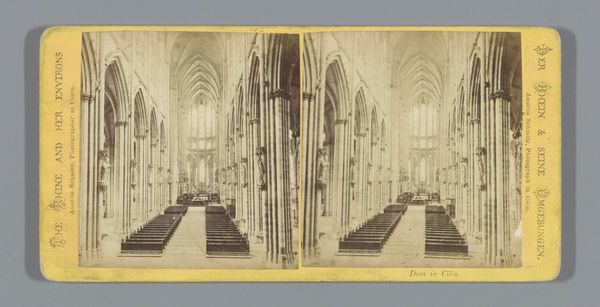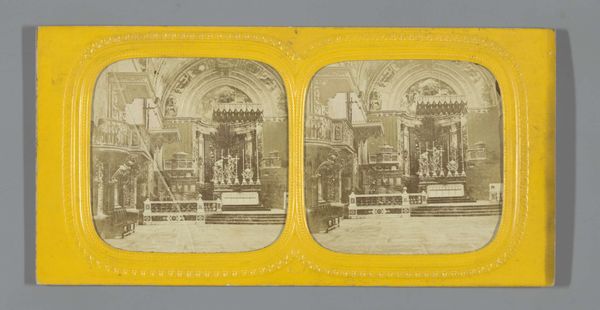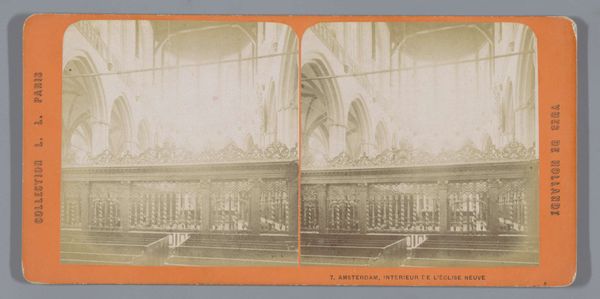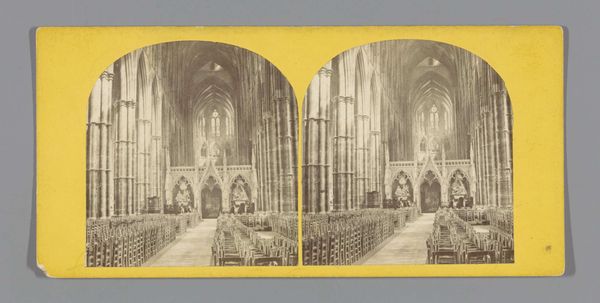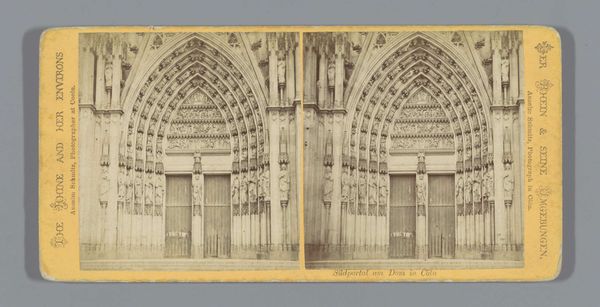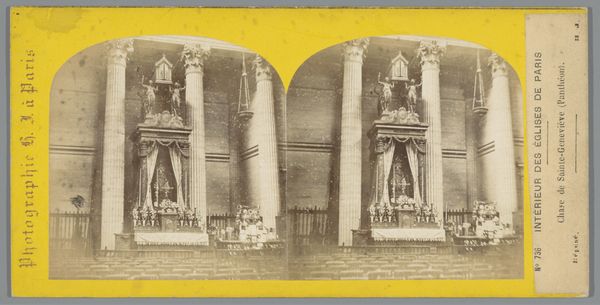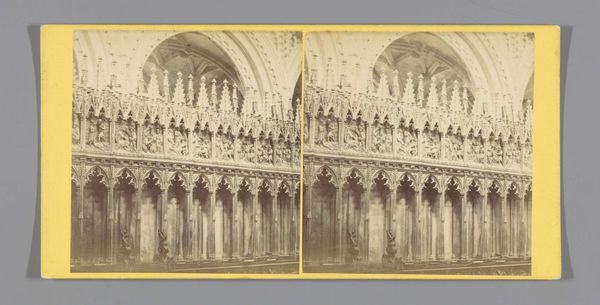
Interieur van de Église Saint-Germain-l'Auxerrois in Parijs met zicht op het koor c. 1850 - 1880
0:00
0:00
Dimensions: height 86 mm, width 172 mm
Copyright: Rijks Museum: Open Domain
Editor: This stereoscopic gelatin silver print, created by Hippolyte Jouvin between 1850 and 1880, showcases the interior of the Église Saint-Germain-l'Auxerrois in Paris. I'm struck by the almost staged feel, the way the figures are positioned amidst the grandeur of the architecture. What elements jump out at you? Curator: The image reflects a crucial intersection of church, state, and visual representation in 19th-century France. Stereoscopic images like these weren't just documentary; they served as a powerful tool for shaping public perception and reinforcing national identity. How does Jouvin use the relatively new technology of photography here? Editor: He uses the stereoscopic format to really emphasize the depth and scale of the church, and its height and soaring quality. It feels very immersive, even now. Is there a political dimension? Curator: Absolutely. Churches like Saint-Germain-l'Auxerrois, near the Louvre, were potent symbols of royal power and then, after revolutions, became stages for negotiating republican ideals. Notice how the photographer frames the choir; it directs the eye, but to what end? What are we meant to think about when observing this place and practice? Editor: I hadn't thought of the church itself being a stage for political narratives. The photograph makes the interior both accessible and somehow...distant, like observing a play. It feels curated. Curator: Precisely. And it reminds us that every image, especially those presented to the public, plays a role in constructing our understanding of history and culture. The politics of imagery! Editor: I see how photography in the Romantic era helped shape not just art, but also the way people related to these powerful institutions and national monuments. Thank you! Curator: Indeed, thinking about the intersection of art, media, and public perception is key. Always question what a picture is trying to *do*, and you'll learn more about it.
Comments
No comments
Be the first to comment and join the conversation on the ultimate creative platform.
